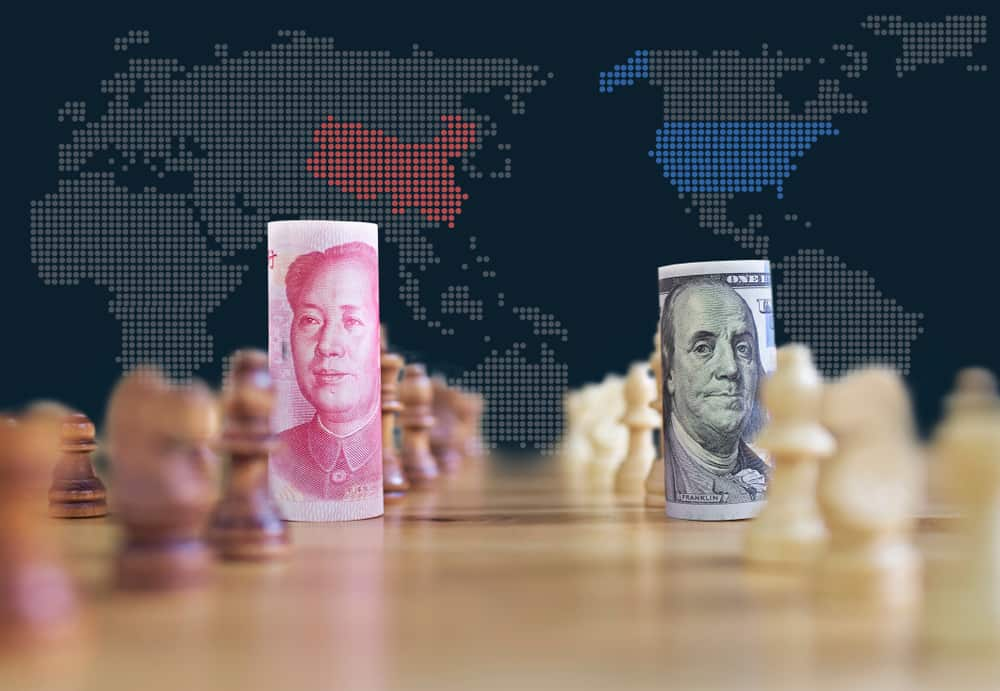China’s economy has experienced remarkable growth in the last few decades, making it one of the world’s largest and most influential economies. However, this growth has come at a cost, with the country’s national debt steadily increasing, raising concerns about China’s ability to achieve and sustain economic stability.
In this line, data acquired by Finbold indicates that as of April 12, China’s national debt amounted to $14.34 trillion, ranking second globally. This value reflects a year-on-year (YoY) increase of $3.81 trillion, or 36.18%, compared to the $10.53 trillion recorded in 2022. The United States, holding the highest national debt globally, has a total of $31.68 trillion, representing a YoY increase of $1.3 trillion or 4.28%, reaching $30.38 trillion. Therefore, China’s national debt has surged almost three times that of the United States in the past 12 months.
In the third spot, Japan has a national debt of $13.36 trillion, indicating a drop of $1.49 trillion YoY. The United Kingdom follows closely at $3.75 trillion, while Germany ranks fifth with a national debt of $3.32 trillion.
In terms of Gross Domestic Product (GDP), the US maintains the highest GDP globally, at $26.32 trillion as of April 12, an 8.8% growth from the $24.19 trillion recorded 12 months ago. China ranks second with a GDP of $17.63 trillion, marking an annual increase of 2.08%. Japan has the third highest GDP globally, amounting to $4.48 trillion, representing a drop of 14.34%. Germany and the UK account for a GDP of $4.20 trillion and $3.32 trillion, respectively.
National debt is the total amount of money a country’s government owes to its creditors. It includes public debt, owed through the issuance of bonds and other securities, and intra-governmental debt, owed through programs such as social security and medicare. GDP measures a country’s economic output, representing the total value of goods and services produced within a country over a given period.
Understanding China’s growing national debt
China’s national debt has been growing due to a combination of factors, including government spending on development projects and slowing economic growth. The national debt growth has come with the state’s injection of credit into government-owned enterprises in response to the aftermath of the global financial crisis. At the same time, in response to the pandemic-induced economic downturn, Chinese authorities made it easier for companies to secure loans, resulting in a further increase in debt levels relative to the size of its economy.
In previous years, China had managed to keep a lower national debt than the US, mainly due to policies initiated by the state. The debt has usually been held by domestic institutional investors, particularly state-owned banks, whose investment and lending practices support government policies such as issuing bonds for infrastructure investment and insurance companies.
The debt situation in China is likely to grow further. Notably, two significant issues affecting the country’s economy and financial markets are its demographic challenge and social security pension obligations burden. China’s one-child policy for decades has led to a shortage of young workers to support an aging population. This trend is expected to continue, and to fulfill its social security pension obligations, the government will likely rely on debt.
Impact on China’s economy
As China battles the ballooning national debt, the country still harbors ambitious economic growth targets that have come with a heavy investment in infrastructure projects. The growing debt has cast a shadow over the country’s economic potential for the foreseeable future. Moreover, the transition toward a consumption-driven growth model has yet to yield significant results.
Analysts maintain that the debt challenge will only slow down China’s economic ascent, not derail it entirely. They remain optimistic about the country’s long-term prospects and predict it will not be long before China surpasses the US as the world’s largest economy.
It is worth noting that China’s financial system is relatively opaque, and there are concerns about the amount of debt held by entities such as local governments and state-owned enterprises. This has led to questions about the overall level of debt in the country and the potential risks associated with a high level of borrowing.
The US debt burden
For the first time, America’s gross national debt exceeded $31 trillion, an alarming financial milestone. The debt threshold has emerged as a major cause for concern as the country’s long-term fiscal outlook has recently become darker with rising interest rates. The debt burden remains a significant challenge despite the GDP surging amid the uncertainty of the general economic prospects characterized by incidents such as the banking sector crisis that saw the high-profile collapse of key lenders.
Notably, the national debt has spiked amid government efforts to stabilize the economy, especially after the pandemic. For instance, the Trump and Biden administrations injected trillions of dollars into the economy to wane off the effects of the pandemic. With the subject becoming a hot political topic in the US, other measures such as tax cuts and healthcare costs continue contributing to the growth.
The skyrocketing inflation has also complicated the US national debt situation. In most cases, when inflation spirals out of control, it can lead to a decrease in investor confidence and an increase in borrowing costs for the government, as lenders demand higher interest rates to compensate for the risk of lending in a high-inflation environment. The government is also facing a higher interest burden on its outstanding debt, making it more difficult to service and potentially increasing the risk of default.
For most global countries, the national debt situation remains a primary concern complicated by the prevailing economic uncertainty. The situation will likely be contained if the respective governments stabilize their economies.







